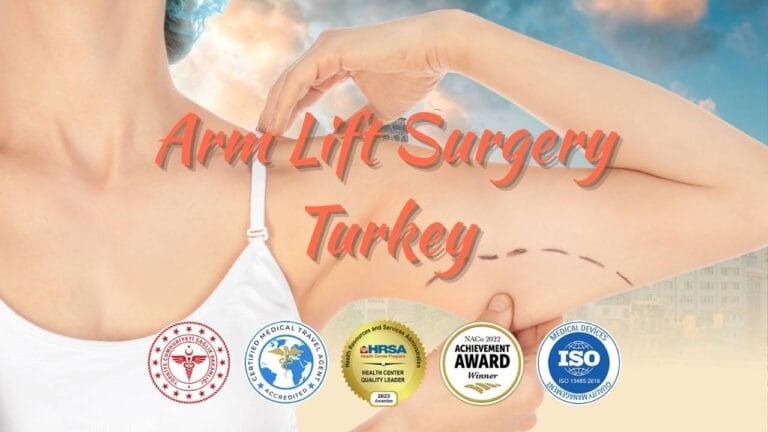The average cost of calf implant surgery (Calf Augmentation) in Turkey in 2026 ranges from $3,500 to $4,800 (approx. £2,800 – £3,800). This all-inclusive price reflects the high medical standards of Turkish clinics, covering FDA-approved silicone implants, general anesthesia, and luxury accommodation, whereas similar procedures in the UK or USA typically charge for the surgery fee only.
2026 Calf Augmentation Price List: Turkey vs. UK/USA
The following table breaks down the costs based on the specific type of lower leg augmentation procedure. Note the significant difference between the all-inclusive packages in Turkey versus the surgery-only fees in Western nations.
| Procedure Type | Turkey Price (All-Inclusive) | UK/USA Price (Surgery Only) | Recovery & Longevity |
|---|---|---|---|
| Standard Silicone Calf Implants | $3,500 – $4,800 | $10,000 – $16,000 | Permanent Results (6-8 weeks full recovery) |
| Composite Augmentation (Implants + Fat) | $4,500 – $6,000 | $15,000 – $22,000 | Permanent (Natural contouring) |
| Calf Lipofilling (Fat Transfer Only) | $3,000 – $4,000 | $8,000 – $12,000 | Long-lasting (Depends on weight stability) |
| Reconstructive Calf Surgery (Polio/Clubfoot) | $4,000 – $5,500 | $18,000+ | Permanent (Functionality & Symmetry focused) |
Why is the Price Lower in Turkey?
The significantly lower price point in Turkey is driven by operational economics and exchange rates rather than a compromise on quality. Turkey has lower labor costs and facility overheads compared to the UK or USA. Crucially, Turkish packages are “All-Inclusive,” meaning they cover hotels, VIP drivers, and medications—expenses that are added on top of the surgery fee in Western clinics.
What Influences the Final Cost?
While the base package price covers most standard procedures, specific medical choices can influence the final quote:
- Implant Brand: We use top-tier global brands such as Polytech and Eurosilicone. Custom-ordered implants for specific deformities may incur a surcharge.
- Technique: The placement method—either Submuscular (under the muscle) or Subfascial (under the fascia)—is chosen based on your anatomy. Submuscular placement is more complex and requires deeper dissection.
- Anesthesia: Unlike in the US where anesthesiologist fees are billed separately (often $1,500+), General Anesthesia is included in all our surgical packages.
Clinic Care Center: Expert Warning on Implants
Calf augmentation is a complex surgery. Be wary of clinics offering this procedure for under $2,500. Low prices often mean the use of generic implants that can rotate or rupture. At Clinic Care Center, we only use FDA or CE-certified cohesive gel implants designed specifically for the lower leg.
Package Inclusions
To ensure a safe recovery and a stress-free experience, our 2026 Calf Augmentation packages include:
- The Surgery: Bilateral calf augmentation performed by a specialist Plastic Surgeon.
- Anesthesia: General Anesthesia and all hospital fees.
- Hospital Stay: 1 Night in a fully equipped hospital for monitoring.
- Accommodation: 3-4 Nights in a 4-star or 5-star hotel.
- VIP Transfer: Private transport between Airport, Hotel, and Clinic.
- Medical Essentials: Medical-grade compression stockings and post-op medications.
- Support: English-speaking translator throughout your journey.
Frequently Asked Questions About Costs
How much does calf augmentation cost in Turkey?
As detailed above, the average all-inclusive cost ranges from $3,500 to $4,800. This price covers the surgeon’s fee, the high-quality silicone implants, and your stay in Istanbul.
Is fat transfer cheaper than implants?
Not necessarily. While Fat Transfer (Calf Lipofilling) avoids the cost of the implant device, it requires liposuction to harvest the fat first. Therefore, the surgical time is often longer, and the price is comparable to implant surgery.
Are the compression stockings included in the price?
Yes, medical compression stockings are included. These are critical for reducing swelling and preventing implant displacement during the first 4-6 weeks of recovery.
Does insurance cover calf implants for polio/clubfoot correction?
In your home country, insurance might cover reconstructive surgery. However, medical tourism in Turkey is generally self-pay. We provide detailed medical reports that you may submit to your provider for potential reimbursement.
Can I combine this with liposuction?
Yes, combining calf implants with other procedures like Liposuction is very common and cost-effective. Combining surgeries allows you to save on hospital and anesthesia fees, often resulting in a package discount of 10-15%.
Get Your Personalized Quote
Contact Clinic Care Center today for a confidential consultation and a personalized quote for your calf augmentation journey.


